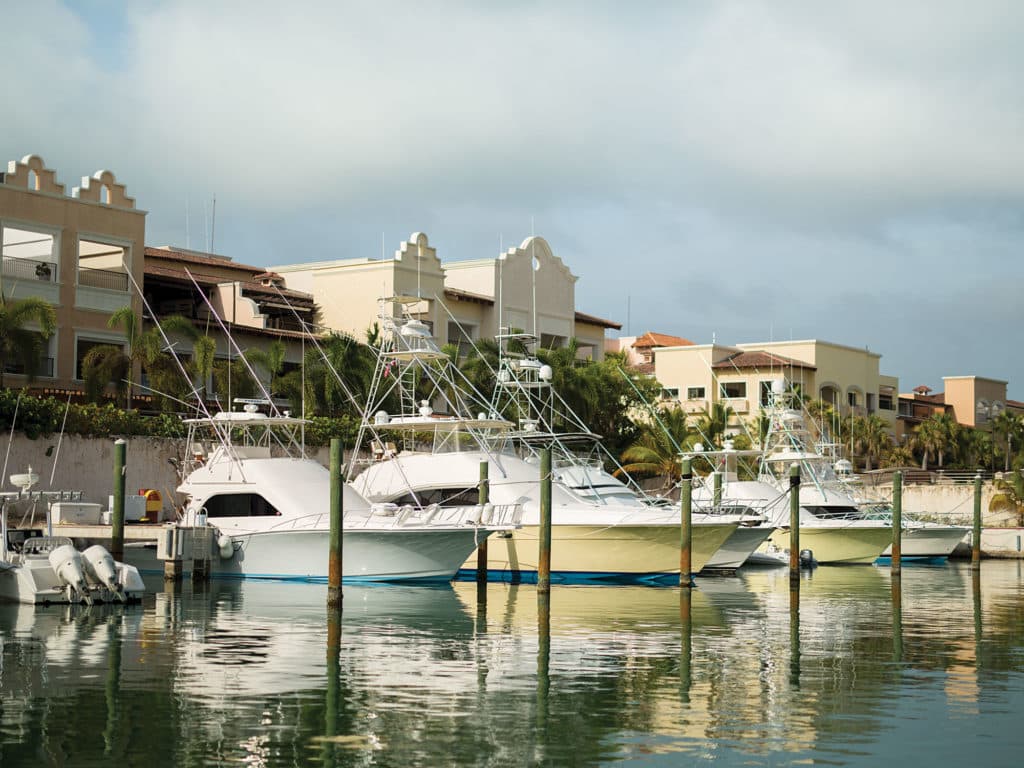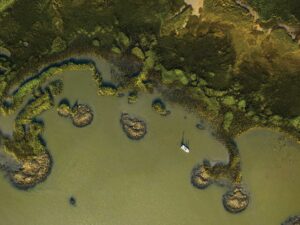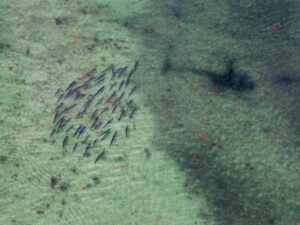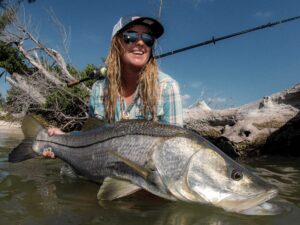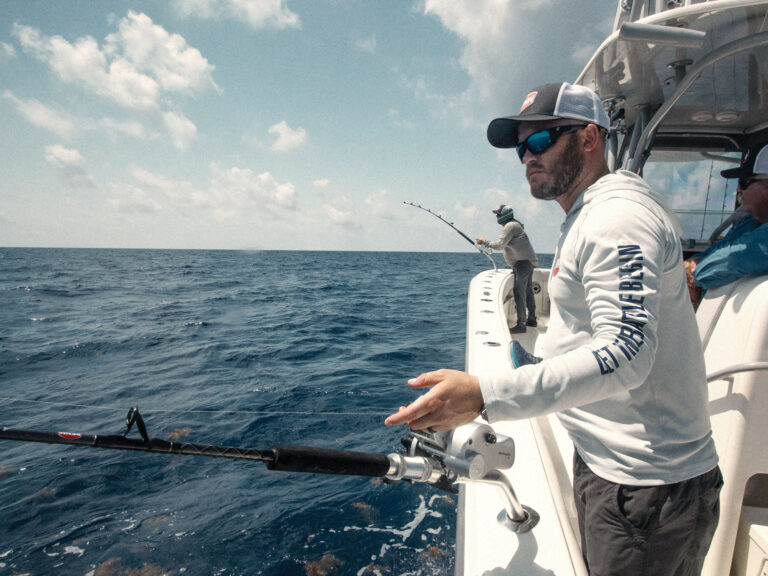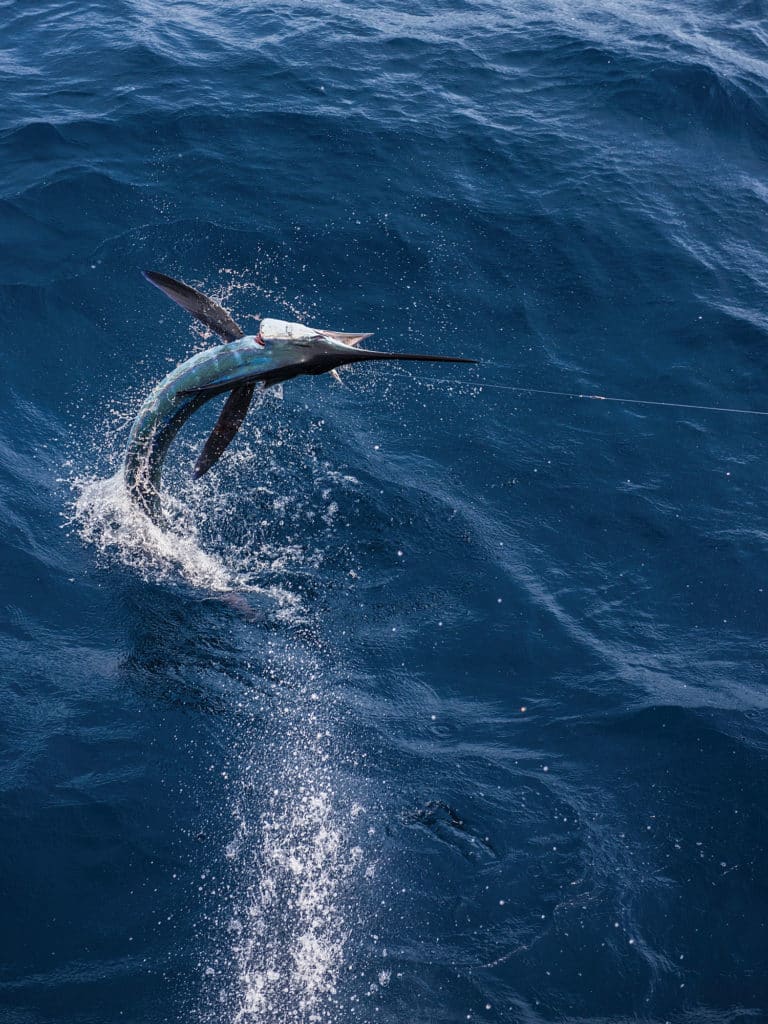
Hang Time
Mona Passage has long had a reputation as one of the most capricious stretches of water in the Caribbean and one of the most productive marlin grounds you’ll find anywhere.
The Passage was living up to the first part of that gnarly rep as we left Cape Cana Inlet behind us and headed east. Big waves and strong winds in the wake of a passing front had the seas kicked up and roily. But this was home turf for Capt. Humberto “Ito” Quintana and his mate, Blanco, on the 53-foot Viking Emily.
Bill Doster and I had joined Rick Alvarez, who’d just finished the first leg of the annual Dominican Republic Triple-Header Tournament Series that he organizes, for a couple of days of offshore angling (SEE VIDEO HERE). Impressive numbers of both blue and white marlin were posted during the mentioned tournament. As it happens every spring, the white marlin were abundant, and the bite was on.
The moment we hit blue water, Quintana throttled back, and he and Blanco set out the spread. Barely 20 minutes into the day, the right long rigger snapped, and we were soon tight to our first white marlin, which might have scratched 30 pounds after a big meal. The surprisingly diminutive billfish put up a showy fight, nonetheless.
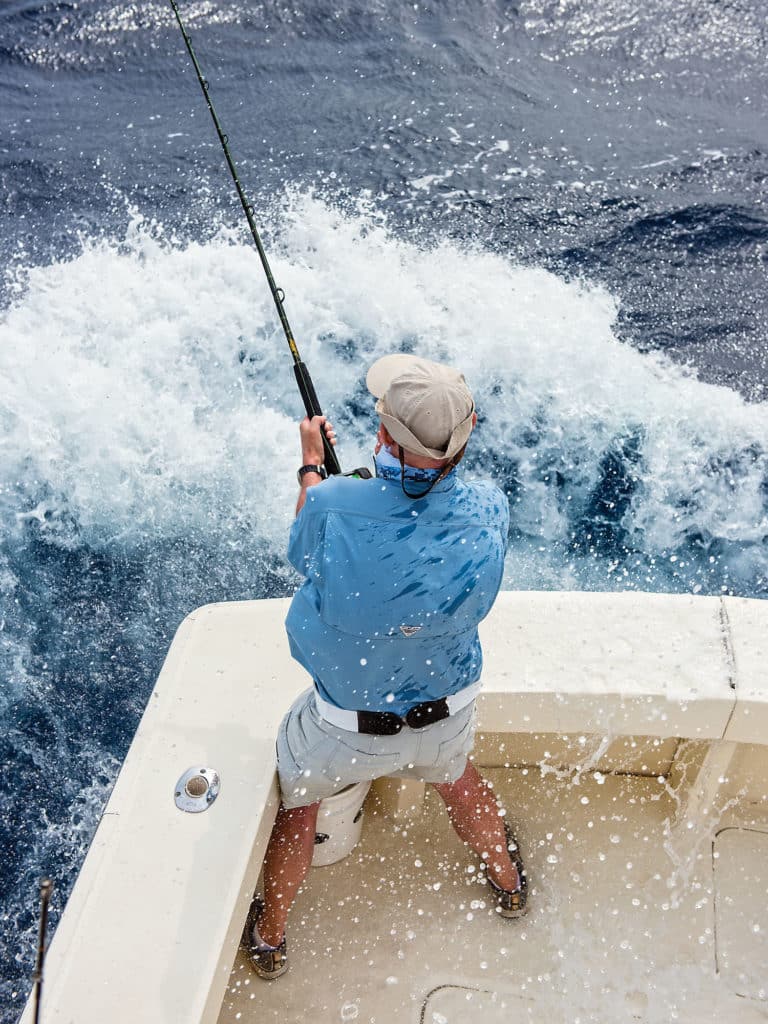
Wet Work
Keep It Simple
Quintana’s chosen trolling spread offered a simple but varietal selection of baits and teasers: To port, a chin-weighted naked ballyhoo was rigged to a circle hook (see sidebar) on the long rigger line; an identically rigged ballyhoo was on a flat line, short off the transom corner; and a daisy chain of plastic squid was off the port teaser reel. To starboard were a rigged-mullet-and-mudflap dredge for a deep teaser, another naked ballyhoo on a long flat line off the transom, and a second squid daisy chain on the short rigger line.
Over the next couple of hours, we raised a half-dozen whites and got the hook into three of them. Quintana was marking bait deep, well below the 100-foot mark, and the only signs of fish we saw on the surface were the white marlin that hit our lures.
Midday brought a flurry of dolphin, and we boxed a couple of nice ones before we hit a lull. But in the idle of the afternoon, the long starboard flat line went off. Alvarez, in characteristic fashion, was on the rod in an instant. “Blue marlin!” Quintana shouted from the bridge as line burned off the 30-pound outfit. The powerful fish dived toward the bottom, forcing Alvarez to watch helplessly as the reel’s spool emptied rapidly.
Then the line went slack, bringing an end to the fight before the angler had a chance to do anything about it. “That was a 300-pounder,” Quintana said. “That’s why he went downstairs.”
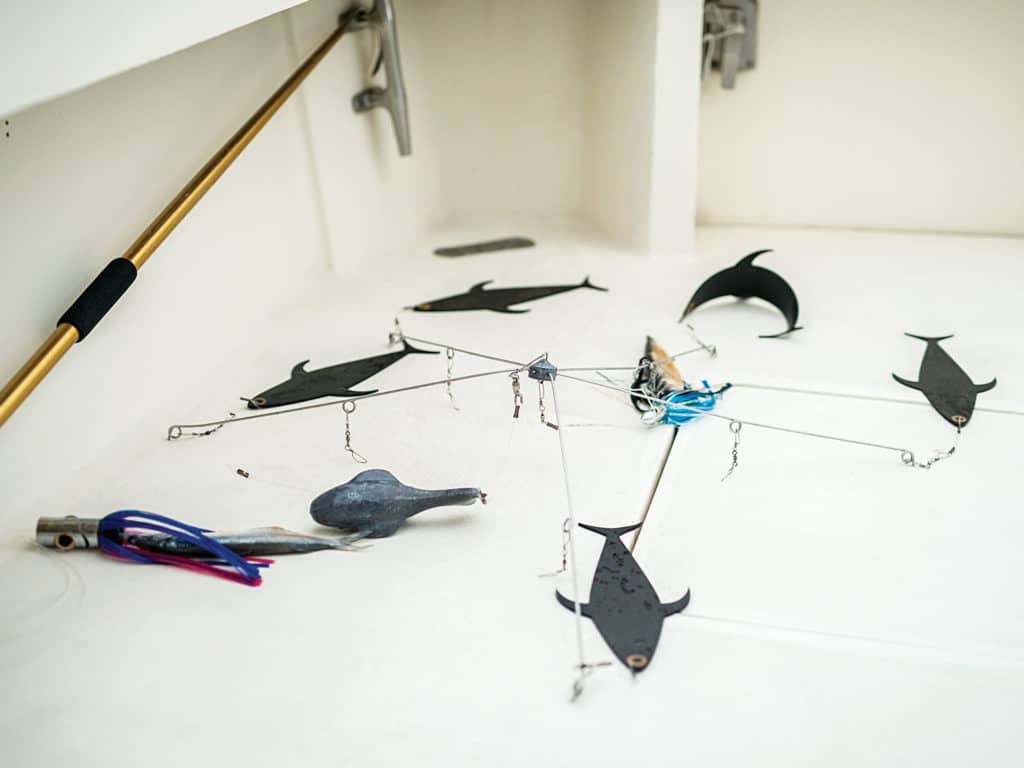
Variety:
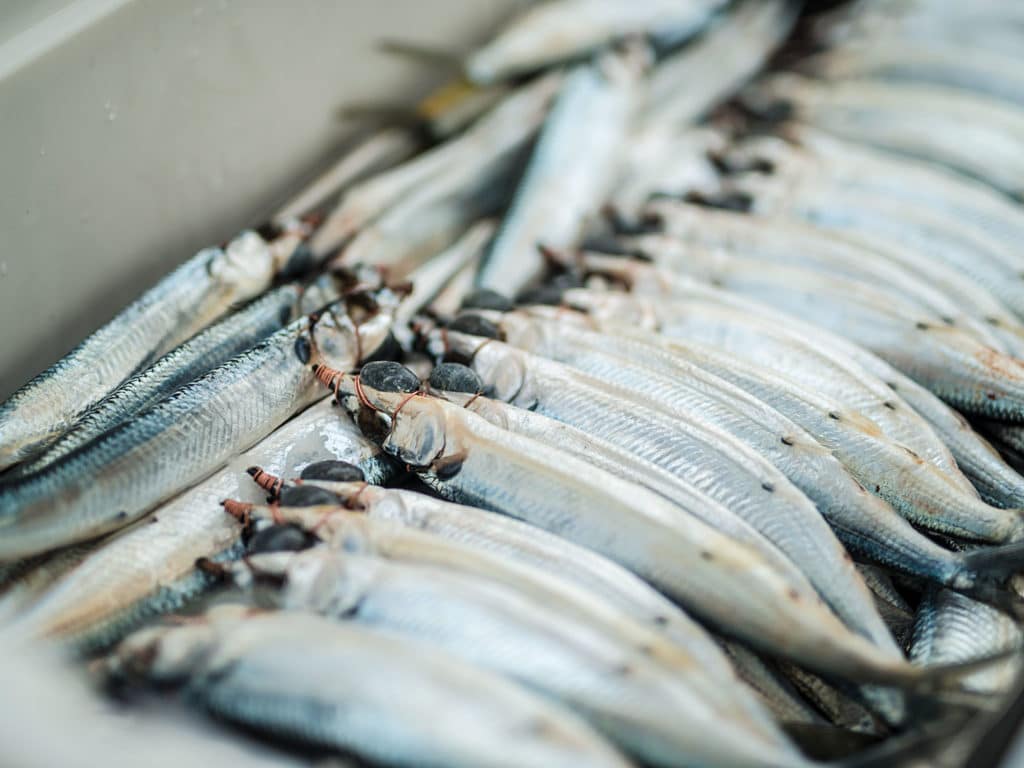
Ready for Action:
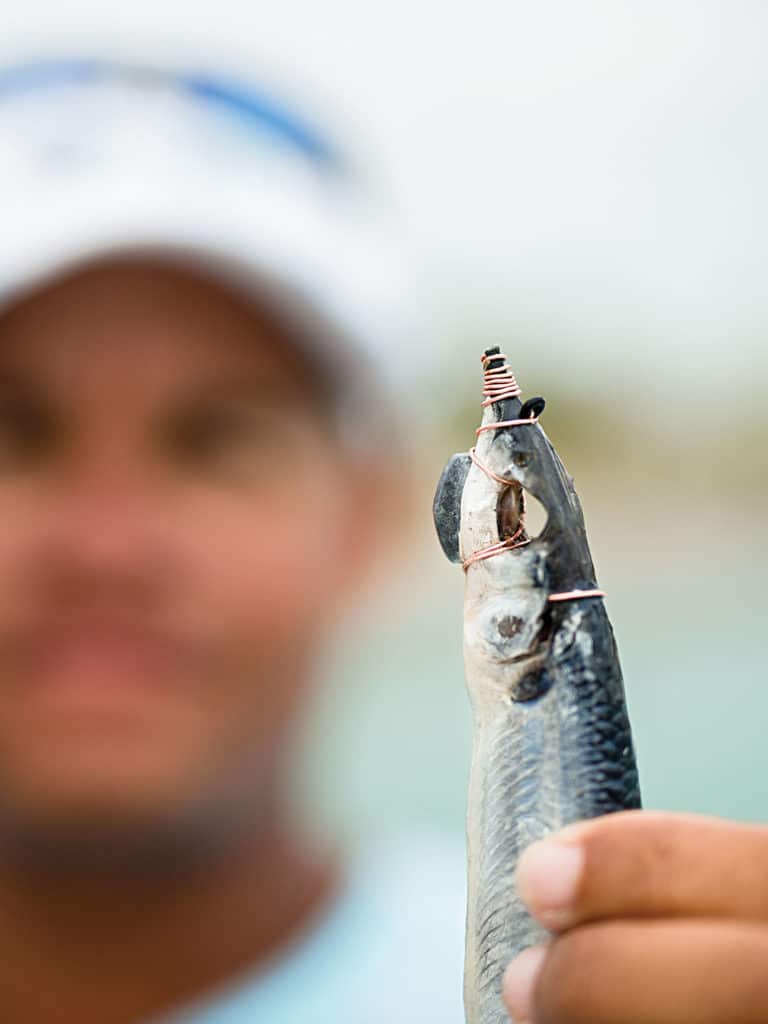
Nearby Action
We worked back toward port as the day wound down, but when off Punta Cana, moving closer to shore doesn’t necessarily mean giving up and moving off the marlin grounds. Often, Blanco explained, the baits go out five minutes after leaving the inlet, and it’s not uncommon to hook whites and blues a long stone’s throw from the sunbathers on the beach.
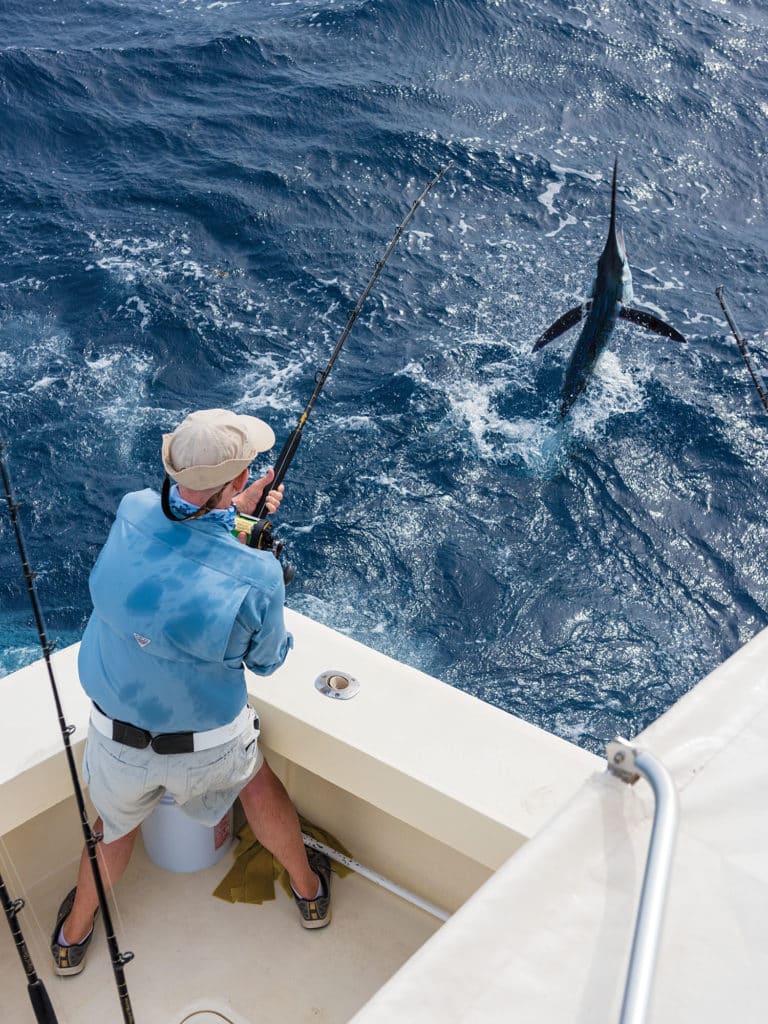
Nearly Done:
That’s part of Punta Cana’s appeal: The moment you clear the inlet, you’re in marlin country. Hooking up whites and blues remains a possibility right up till the end of the day when it’s time to make the short run back to port. You lose no fishing time running to and from productive water.
After going 3 for 6 on whites, losing a nice blue and boxing a few dolphin, we’d done better than most of the fleet on our first day out and had some flags to fly on the way back to the dock.
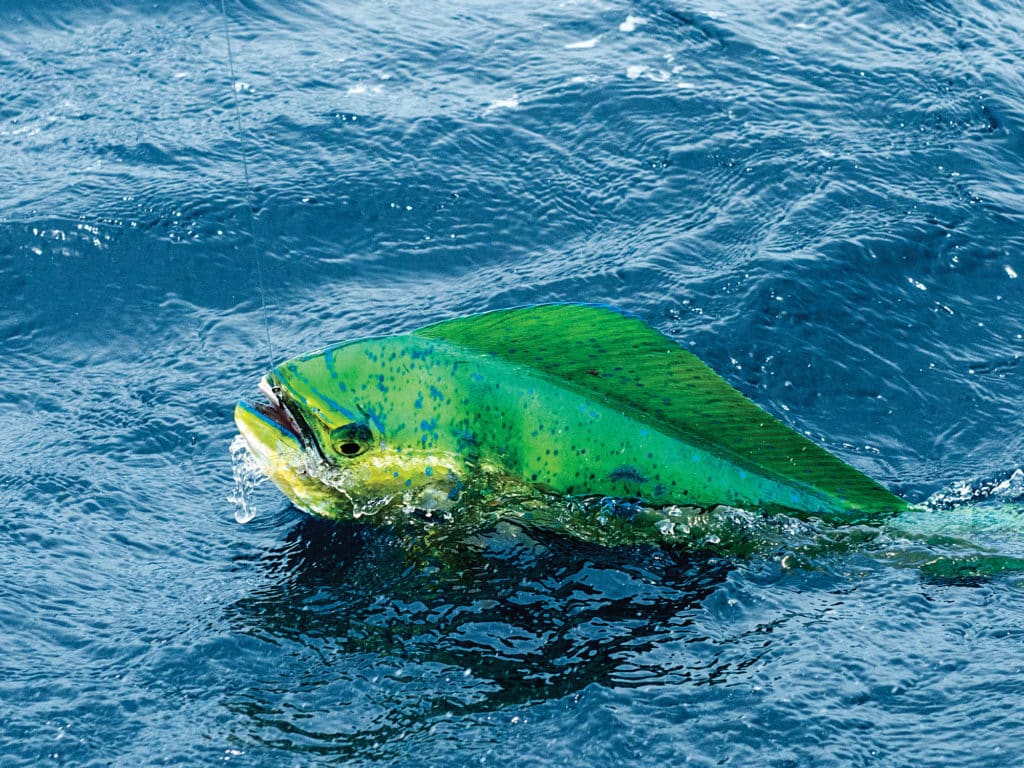
For the Table:
Offshore Banking
The weather and the seas lay down the next morning, and Quintana opted to try a place he calls Three Rocks about 12 miles out. Mona Passage, the 80-mile stretch between the DR and Puerto Rico, is beset with these “rocks,” as they are called locally, which are actually submerged humps or banks edged by steep drops.
Current in the Passage, although sometimes shifty, generally runs at 4 knots with a northward set, spinning off the Caribbean Current that runs west along the south side of the Greater Antilles (Puerto Rico, Hispaniola and Cuba), flowing north to join the Antilles Current on the north side of these big islands.
The water rolls over bottom contoured like the bed of a mountain stream, though on a grand scale. The so-called rocks rise from a surrounding depth of 1,000 feet to 300 feet below the surface, and the resulting upwellings concentrate the bait marlin prey upon. Though the drops are dramatic, it’s the adjacent banks that produce best.
“I don’t fish the big, steep drops very often,” Quintana explains. “The bait generally hold up on the top of the banks, and that’s where the marlin are.”
That theory definitely pays off; in fact, it has produced blue marlin every month of the year for Quintana. The last three seasons, the big-game captain has averaged 100 blues in three months. “And I didn’t even fish every day,” he says. Do the cipherin’ and that averages to at least one blue every day.
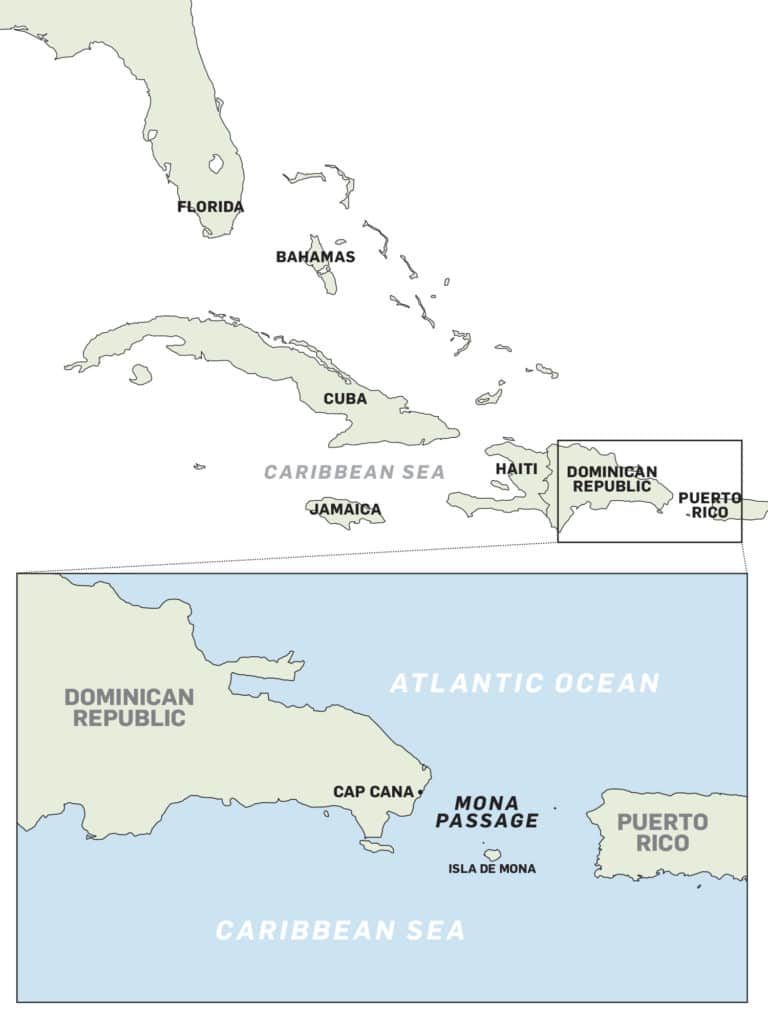
Promised Land
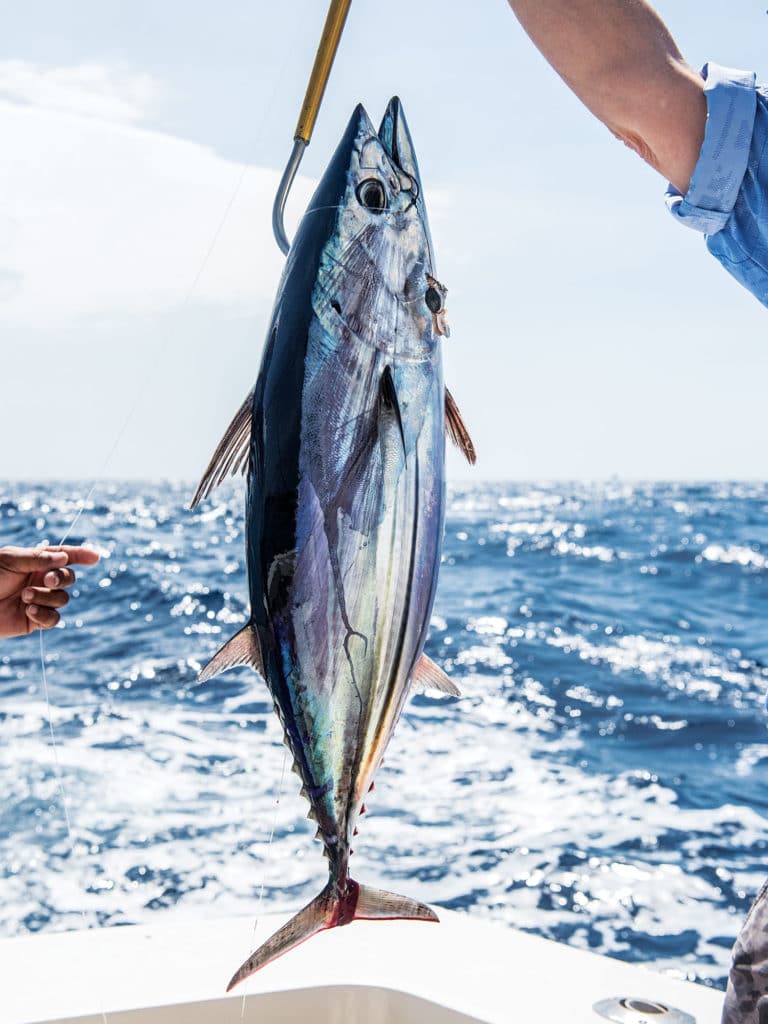
Big Bait:
Second Round
Mate Blanco and his brother Moreno set out the baits as we approached Three Rocks, evident by the increased surface chop. We trolled the banks until 10 a.m. when we found a big school of blackfin tuna given away by the shearwaters and petrels patrolling the wave tops.
We trolled a circle around the school, keeping an eye on the birds to give the tuna a wide berth. We boated four fat little blackfins in the 10-pound range before finally finding what we were looking for: the blue marlin following the tuna. That’s when our day fell into line with Quintana’s averages. When the rigger clip snapped, Doster dropped his cameras, grabbed the rod and was hooked up to his first blue marlin. Half an hour and a grueling fight later, he had his fish boat-side for a healthy release.
Our score for the day: four tuna and one blue marlin, unusual for the season because blue marlin are most prevalent in late summer and fall while white marlin, usually predominant in the spring, were surprisingly scarce. Of course, some blues, whites, sailfish and mahi stick around all year off the DR.
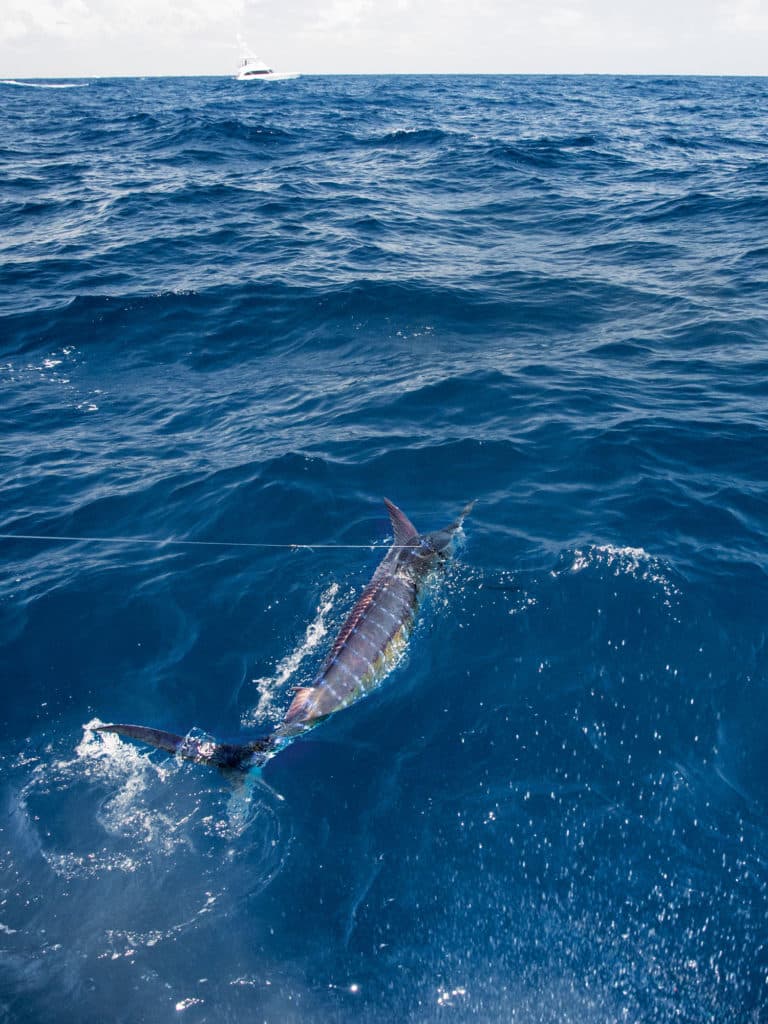
Matter of Time:
Comeuppance
Our third day coincided with the start of a local tournament, which Quintana drafted us to fish, this time aboard the 42-foot Bertram Lady Lola. Steely seas and rain met us first thing in the morning, and we did not get any action until 10 o’clock. That’s when a couple of whites came into the spread but failed to engage.
Out beyond Three Rocks, we thoroughly worked the banks, and at 11:30 a.m., the left rigger went off and Blanco landed a white. Strangely, fish only hit Blanco’s assigned rod the remainder of the day, and none ever came up on the dredge. It seemed the spirit of competition had us snake bit, and our couple of white marlin releases hardly put us on the board.
Unfinished Business
The next morning, packing to return home, we watched the fleet leave the harbor for the second day of the tournament and felt as though we were leaving behind some unfinished business. But one trip must end for another to begin. As we drove to the airport, Alvarez made a quick call to tournament headquarters. Wouldn’t you know it, barely an hour after lines in, the fleet had a dozen whites on the board. The bite off Punta Cana was back on.
